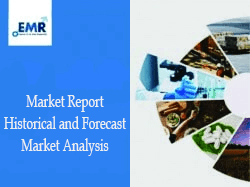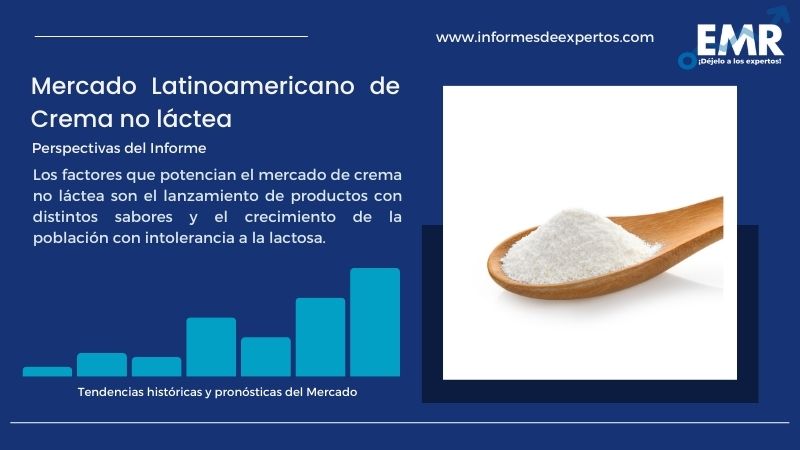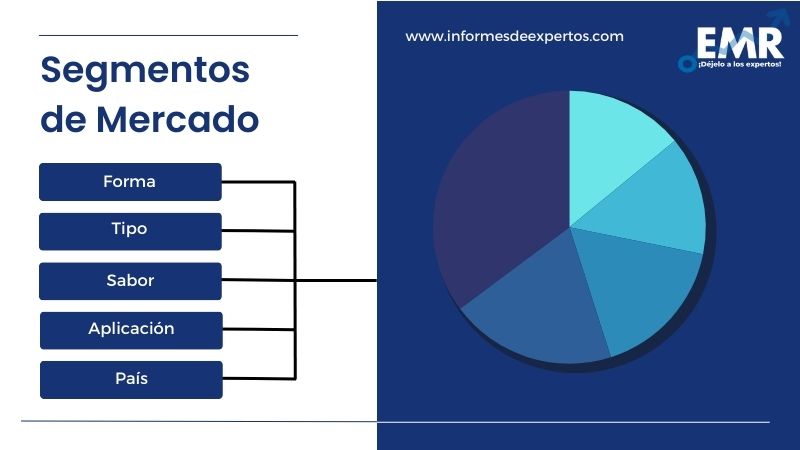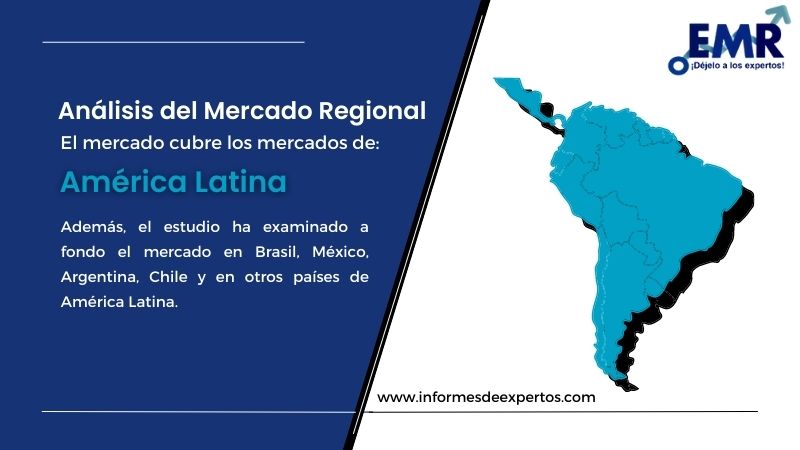Informes

Mercado Latinoamericano de Crema no láctea – Por Origen (Almendra, Coco, Soja); Por Forma (Líquido, En Polvo); Por Naturaleza (Orgánica, Convencional); Por Canal de Distribución (Supermercados e Hipermercados, Tiendas en Línea, Otros); Por País (México, Argentina, Brasil, Otros); Dinámica del Mercado, Panorama Competitivo
Perspectiva del Mercado Latinoamericano de Crema no Láctea
El mercado de crema no láctea de América Latina alcanzó un valor de USD 799,98 millones en el año 2025. Se estima que el mercado crecerá a una tasa de crecimiento anual compuesta del 9,3% entre 2026 y 2035, para alcanzar un valor de 1776,58 millones de USD en 2035.

La crema no láctea se añade a las bebidas como el té, el café, etc. para que funcionen como alternativas a los productos diarios como la leche y la nata. En lugar de lactosa, una proteína llamada caseína está presente en ellos. Hay una amplia variedad de cremas no lácteas disponibles en el mercado.
El mercado latinoamericano de crema no láctea está impulsado principalmente por la creciente población intolerante a la lactosa que genera una demanda de alternativas lácteas. La creciente tendencia hacia el veganismo y la demanda de aditivos vegetales y libres de alérgenos en las bebidas también promueven el crecimiento del mercado. El cambio de estilo de vida, un número creciente de consumidores conscientes de la salud y el desarrollo de cremas a base de plantas también contribuyen al crecimiento. Además, la innovación, la expansión de tipos y sabores de cremas no lácteas y el aumento de los ingresos disponibles también son catalizadores para la industria.
La Crema no Láctea: Segmentación del Mercado

Por origen, el mercado se clasifica en:
- Almendra
- Coco
- Soja
Según la forma, el mercado se divide en:
- Líquido
- En Polvo
Basado en la naturaleza, el mercado se clasifica en:
- Orgánica
- Convencional
Basado en el canal de distribución, el mercado se segmenta en:
- Supermercados e Hipermercados
- Tiendas en Línea
- Otros
Según el país, el mercado se segmenta en:
- Brasil
- México
- Argentina
- Otros

La creciente intolerancia a la lactosa impulsa el mercado latinoamericano de crema no láctea
El mercado de crema no láctea en América Latina está impulsado por las crecientes tendencias del veganismo y el aumento de la intolerancia a la lactosa en países como México. La creciente conciencia sanitaria y la demanda de aditivos vegetales y sin alérgenos en las bebidas también impulsan el mercado. A diferencia de las cremas lácteas tradicionales, tiene un coste más bajo y una vida útil más larga, lo que también impulsa el crecimiento del mercado. Se espera que la innovación, la creciente demanda de sabores y el desarrollo de cremas nutritivas que contengan proteínas y fibra dietética estimulen aún más el mercado durante el período de pronóstico.
Actores Clave del Mercado Latinoamericano de Crema no Láctea
Los principales actores del mercado son Nestlé S.A., Danone S.A., Rich Products Corporation, TreeHouse Foods Inc. y Balchem Corporation, entre otros.
Las bases de datos incluidas en el informe sobre el mercado de crema no láctea de América Latina proporcionan importantes impactos en el desarrollo presentadas por las principales empresas, teniendo en cuenta sus ingresos. Este informe consta de los valores del período histórico (2019-2025) y del período de pronóstico (2026-2035) con patrones de evaluación ampliados que se llevan a cabo mediante el análisis IDE basado en el origen, la forma, la naturaleza, el canal de distribución y el país del mercado para determinar el movimiento del estudio.
Además, el proyecto estudiado y analizado se basa en información detallada sobre el modelo de las cinco fuerzas de Porter, las estrategias de los principales actores existentes y sus carteras con diferenciación beneficiosa en innovación de productos en la industria. Por lo tanto, se concluye que el análisis del poder de negociación de los compradores, el poder adquisitivo de los consumidores, la amenaza de los sustitutos y la nueva entrada con el efecto de la reactivación económica y el desarrollo se evalúa para subrayar el poderoso impacto en el mercado.
Preguntas Clave Respondidas en Este Informe:
- ¿Cuál es el rendimiento actual y la trayectoria proyectada del mercado de crema no láctea de américa latina?
- ¿Cuáles son los principales impulsores, oportunidades y retos para el mercado de crema no láctea de américa latina?
- ¿Cómo afecta cada impulsor, restricción y oportunidad al mercado de crema no láctea de américa latina?
- ¿Cuáles son los principales mercados regionales estudiados en el informe?
- ¿Cuál es la región líder en el mercado de crema no láctea de américa latina?
- ¿Qué factores contribuyen al dominio de esta región en el mercado de crema no láctea de américa latina?
- ¿Cuál es la tasa de crecimiento histórica del mercado de crema no láctea de américa latina en los últimos años?
- ¿Cuáles son sus respectivas fortalezas y enfoques de mercado?
- ¿Cómo contribuyen estas empresas a la dinámica general del mercado de crema no láctea de américa latina?
- ¿Cuál es la estructura competitiva del mercado?
- ¿Quiénes son los principales actores del mercado de crema no láctea de américa latina?
Beneficios Clave para las Partes Interesadas:
- El informe de la industria de IDE ofrece un análisis cuantitativo exhaustivo de varios segmentos del mercado, las tendencias históricas y actuales del mercado, las previsiones del mercado y la dinámica del mercado de crema no láctea de américa latina de 2019 a 2035.
- El informe ofrece los datos más recientes sobre los impulsores, retos y oportunidades del mercado. El informe traza los principales mercados regionales, así como los que registran la tasa de crecimiento más rápida. Además, permite a las partes interesadas identificar los principales mercados nacionales de cada región.
- El análisis de las cinco fuerzas de Porter ayuda a las partes interesadas a evaluar el impacto de los nuevos operadores, la rivalidad competitiva, el poder del proveedor, el poder del comprador y la amenaza de sustitución. Ayuda a las partes interesadas a analizar el nivel de competencia en la industria de crema no láctea de américa latina y su atractivo.
- El panorama competitivo permite a las partes interesadas comprender su entorno competitivo y ofrece una visión de las posiciones actuales de los principales actores del mercado.
Alcance del Mercado:
|
Características del Informe |
Detalles |
|
Año Base de la Estimación: |
2025 |
|
Datos Históricos: |
2019-2025 |
|
Datos de Pronóstico: |
2026-2035 |
|
Alcance del Informe: |
Tendencias Históricas y Previsiones del Mercado, Impulsores y Limitantes de
|
|
Desglose por Origen: |
|
|
Desglose por Forma: |
|
|
Desglose por Naturaleza: |
|
|
Desglose por |
|
|
Desglose por País: |
|
|
Dinámica del Mercado: |
|
|
Panorama Competitivo: |
|
|
Empresas Cubrietas: |
|
*En Informes de Expertos siempre nos esforzamos por brindarle la información más reciente. Los números de artículo son solo indicativos y pueden diferir del informe real.
Language of the Report – English
Sin embargo, el informe puede estar disponible en español por un costo adicional.
1 Preface
2 Report Coverage – Key Segmentation and Scope
3 Report Description
3.1 Market Definition and Outlook
3.2 Properties and Applications
3.3 Market Analysis
3.4 Key Players
4 Key Assumptions
5 Executive Summary
5.1 Overview
5.2 Key Drivers
5.3 Key Developments
5.4 Competitive Structure
5.5 Key Industrial Trends
6 Market Snapshot
7 Opportunities and Challenges in the Market
8 Global Non-Dairy Creamer Market Overview
8.1 Key Industry Highlights
8.2 Global Non-Dairy Creamer Historical Market (2019-2025)
8.3 Global Non-Dairy Creamer Market Forecast (2026-2035)
8.4 Global Non-Dairy Creamer Market Share by Region
8.4.1 North America
8.4.2 Europe
8.4.3 Asia Pacific
8.4.4 Latin America
8.4.5 Middle East and Africa
9 Latin America Non-Dairy Creamer Market Overview
9.1 Key Industry Highlights
9.2 Latin America Non-Dairy Creamer Historical Market (2019-2025)
9.3 Latin America Non-Dairy Creamer Market Forecast (2026-2035)
10 Latin America Non-Dairy Creamer Market by Origin
10.1 Almond
10.1.1 Historical Trend (2019-2025)
10.1.2 Forecast Trend (2026-2035)
10.2 Coconut
10.2.1 Historical Trend (2019-2025)
10.2.2 Forecast Trend (2026-2035)
10.3 Soy
10.3.1 Historical Trend (2019-2025)
10.3.2 Forecast Trend (2026-2035)
11 Latin America Non-Dairy Creamer Market by Form
11.1 Liquid
11.1.1 Historical Trend (2019-2025)
11.1.2 Forecast Trend (2026-2035)
11.2 Powdered
11.2.1 Historical Trend (2019-2025)
11.2.2 Forecast Trend (2026-2035)
12 Latin America Non-Dairy Creamer Market by Nature
12.1 Organic
12.1.1 Historical Trend (2019-2025)
12.1.2 Forecast Trend (2026-2035)
12.2 Conventional
12.2.1 Historical Trend (2019-2025)
12.2.2 Forecast Trend (2026-2035)
13 Latin America Non-Dairy Creamer Market by Distribution Channel
13.1 Supermarkets and Hypermarkets
13.1.1 Historical Trend (2019-2025)
13.1.2 Forecast Trend (2026-2035)
13.2 Online Stores
13.2.1 Historical Trend (2019-2025)
13.2.2 Forecast Trend (2026-2035)
13.3 Others
14 Latin America Non-Dairy Creamer Market by Country
14.1 Brazil
14.1.1 Historical Trend (2019-2025)
14.1.2 Forecast Trend (2026-2035)
14.2 Mexico
14.2.1 Historical Trend (2019-2025)
14.2.2 Forecast Trend (2026-2035)
14.3 Argentina
14.3.1 Historical Trend (2019-2025)
14.3.2 Forecast Trend (2026-2035)
14.4 Others
15 Market Dynamics
15.1 SWOT Analysis
15.1.1 Strengths
15.1.2 Weaknesses
15.1.3 Opportunities
15.1.4 Threats
15.2 Porter’s Five Forces Analysis
15.2.1 Supplier’s Power
15.2.2 Buyer’s Power
15.2.3 Threat of New Entrants
15.2.4 Degree of Rivalry
15.2.5 Threat of Substitutes
15.3 Key Indicators of Demand
15.4 Key Indicators of Price
16 Value Chain Analysis
17 Competitive Landscape
17.1 Market Structure
17.2 Company Profiles
17.2.1 Nestlé S.A.
17.2.1.1 Company Overview
17.2.1.2 Product Portfolio
17.2.1.3 Demographic Reach and Achievements
17.2.1.4 Certifications
17.2.2 Danone S.A.
17.2.2.1 Company Overview
17.2.2.2 Product Portfolio
17.2.2.3 Demographic Reach and Achievements
17.2.2.4 Certifications
17.2.3 Rich Products Corporation
17.2.3.1 Company Overview
17.2.3.2 Product Portfolio
17.2.3.3 Demographic Reach and Achievements
17.2.3.4 Certifications
17.2.4 TreeHouse Foods Inc.
17.2.4.1 Company Overview
17.2.4.2 Product Portfolio
17.2.4.3 Demographic Reach and Achievements
17.2.4.4 Certifications
17.2.5 Balchem Corporation
17.2.5.1 Company Overview
17.2.5.2 Product Portfolio
17.2.5.3 Demographic Reach and Achievements
17.2.5.4 Certifications
17.2.6 Others
18 Key Trends and Developments in the Market
List of Key Figures and Tables
1. Global Non-Dairy Creamer Market: Key Industry Highlights, 2019 and 2035
2. Latin America Non-Dairy Creamer Market: Key Industry Highlights, 2019 and 2035
3. Latin America Non-Dairy Creamer Historical Market: Breakup by Origin (USD Million), 2019-2025
4. Latin America Non-Dairy Creamer Market Forecast: Breakup by Origin (USD Million), 2026-2035
5. Latin America Non-Dairy Creamer Historical Market: Breakup by Form (USD Million), 2019-2025
6. Latin America Non-Dairy Creamer Market Forecast: Breakup by Form (USD Million), 2026-2035
7. Latin America Non-Dairy Creamer Historical Market: Breakup by Nature (USD Million), 2019-2025
8. Latin America Non-Dairy Creamer Market Forecast: Breakup by Nature (USD Million), 2026-2035
9. Latin America Non-Dairy Creamer Historical Market: Breakup by Distribution Channel (USD Million), 2019-2025
10. Latin America Non-Dairy Creamer Market Forecast: Breakup by Distribution Channel (USD Million), 2026-2035
11. Latin America Non-Dairy Creamer Historical Market: Breakup by Country (USD Million), 2019-2025
12. Latin America Non-Dairy Creamer Market Forecast: Breakup by Country (USD Million), 2026-2035
13. Latin America Non-Dairy Creamer Market Structure
*The list of players in the competitive landscape section can be customised or made more exhaustive based on your specific requirements.*
¿Cuál fue el valor del mercado de crema no láctea en América Latina en 2025?
El mercado de crema no láctea en América Latina consiguió un valor de 799,98 millones de dólares en 2025.
¿Cuál es la tasa de crecimiento anual compuesto del mercado crema no láctea en América Latina?
Se calcula que el mercado de crema no láctea en América Latina aumentará una CAGR del 9,3% en el periodo de pronóstico 2026-2035.
¿Qué factores potencian el mercado de crema no láctea en América Latina?
Los factores que potencian el mercado de crema no láctea son el lanzamiento de productos con distintos sabores y el crecimiento de la población con intolerancia a la lactosa.
¿Cuáles son los distintos canales de distribución de la crema no láctea?
Los distintos canales de distribución de la crema no láctea son los supermercados, los hipermercados y las tiendas en línea, entre otros.
¿Cuál es la segmentación del mercado latinoamericano de crema no láctea según el origen?
Según el origen, el mercado se segmenta en almendra, coco y soja.
¿Cuáles son los principales países incluidos en el informe del mercado latinoamericano de crema no láctea?
Los principales países latinoamericanos incluidos en el informe de mercado son Argentina, Brasil y México, entre otros.
¿Cuáles son las empresas clave del mercado latinoamericano de crema no láctea?
Las empresas clave del mercado son Nestlé S.A., Danone S.A., Rich Products Corporation, TreeHouse Foods Inc. y Balchem Corporation, entre otras.
¿Cuál es la perspectiva de pronóstico del mercado de crema no láctea de América Latina para 2026-2035?
Se espera que el mercado de crema no láctea de América Latina experimente un crecimiento sólido durante el periodo de pronóstico de 2026-2035 para alcanzar los USD 1776,58 millones en 2035.
Excel Data Set
USD1799
-
Datos completos en formato Excel para un usuario
-
Impresión no permitida
-
Entrega por Email
-
Personalización limitada gratuita (pre-venta)Soporte de analista post ventaDescuento del 50% en la Próxima ActualizaciónUsuario Único
USD3199
USD2999-
Restringido a un usuario
-
Solo una impresión
-
Disponible en PDF
-
Personalización limitada gratuita (pre-venta)Soporte de analista post ventaDescuento del 50% en la Próxima ActualizaciónCinco Usuarios
USD4199
USD3999-
Restringido a cinco usuarios
-
Una impresión por usuario
-
Disponible en PDF
-
Personalización limitada gratuita (pre-venta)
-
Soporte de analista post venta
-
Descuento del 50% en la Próxima Actualización
Multiusuario
USD5199
USD4999-
Usuarios ilimitados dentro de la organización
-
Impresiones ilimitadas
-
Disponible en PDF
-
Personalización limitada gratuita (pre-venta)
-
Soporte de analista post venta
-
Descuento del 50% en la Próxima Actualización
Póngase en Contacto¿Cualquier Pregunta? Hable con un Analista
Solicitar una MuestraVer una Muestra
Solicitar PersonalizaciónSe le olvidó algo? Pregunte Ahora
¿Por qué Informes de Expertos?La Gente Adecuada
Somos técnicamente excelentes, estratégicos, prácticos, experimentados y eficientes; nuestros analistas son cuidadosamente seleccionados en función de tener los atributos correctos para trabajar con éxito y ejecutar proyectos basados en sus expectativas.
Metodología Correcta
Aprovechamos nuestra tecnología de vanguardia, nuestro acceso a bases de datos confiables y nuestro conocimiento de los modelos actuales utilizados en el mercado para ofrecerle soluciones de investigación que se adapten a sus necesidades y lo pongan a la vanguardia.
Precio Justo
Realizamos una investigación exhaustiva y de calidad superior a precios razonables, inigualables y que demuestran nuestra comprensión de su estructura de recursos. Además, ofrecemos descuentos atractivos en nuestros próximos informes.
Apoyo Adecuado
Nuestro equipo de analistas expertos está a su disposición entera para ofrecerle resultados óptimos personalizados para satisfacer sus necesidades precisas dentro del plazo especificado y ayudarlo a comprender mejor la industria.
Informes SimilaresEl mercado de hongos cola de pavo en México alcanzó un valor de 9,18 mil millones de USD en 2025 y, con una tasa compuesta de crecimiento anual del 9,1%, alcanzará un valor de 21,93 mil millones de...
El mercado de la gelatina está impulsado por una mayor demanda de alimentos, productos farmacéuticos y cosméticos, una mayor conciencia sobre la salud y un mayor uso de nutracéuticos y alimentos f...
El crecimiento del mercado de almidón modificado en México se atribuye al fuerte interés en alimentos de conveniencia y tradicionales, formulaciones personalizadas adaptadas a las cocinas regionale...
La creciente demanda de alimentos de etiqueta limpia, el aumento de las necesidades de vida útil y la innovación en antioxidantes de origen vegetal son factores clave que contribuyen a la trayectori...
El mercado de salsas y aderezos se ve favorecido por los cambios en los hábitos alimentarios de los consumidores, el aumento de los ingresos disponibles, las campañas de marketing eficaces y el crec...
Newsletter





